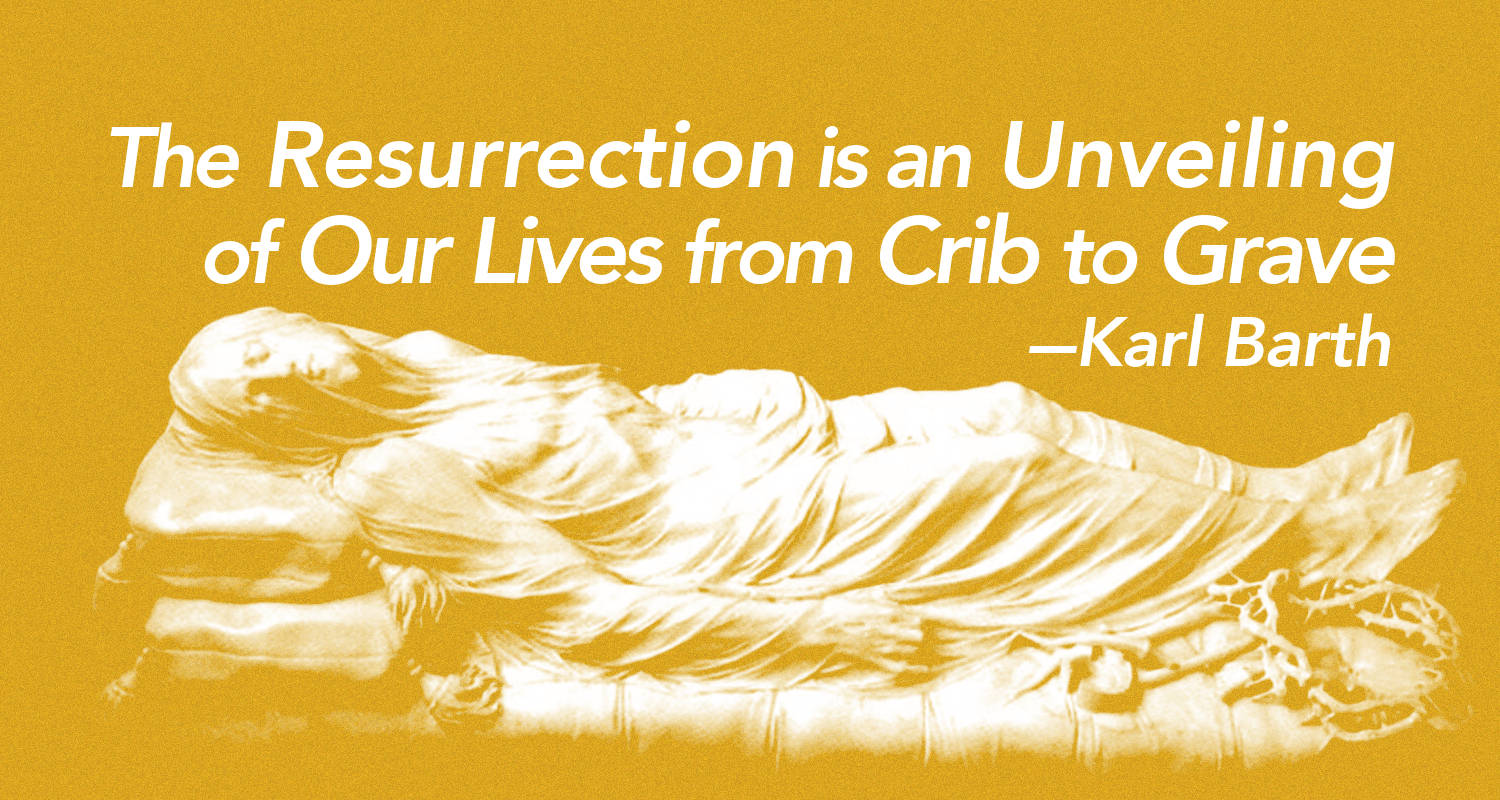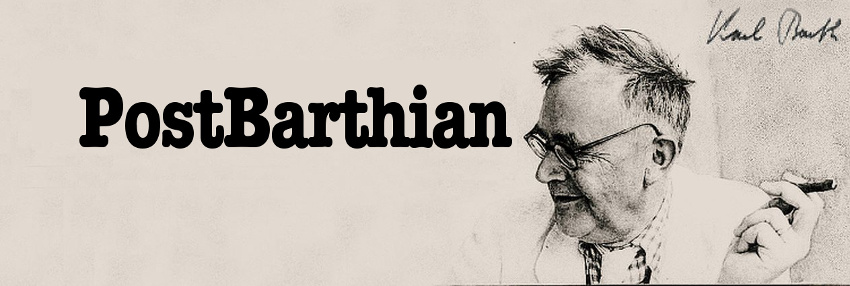
In Karl Barth's Faith of the Church, describes the future resurrection like an unveiling of an art exhibit. Barth compares our entire lives from birth to death to an art exhibit under a table cloth, such that the art exhibit is present to all, but its true form is unrecognizable due to the sheet that covers it. The art exhibit does not change when the veil is removed, but the true form of the art exhibit is suddenly revealed to all when the sheet is removed. The resurrection is therefore a paradigm shift, where the entire world is seen in the new light of the resurrection of Jesus Christ that was/is not discernible before the final resurrection.
Even though we cannot imagine for ourselves the resurrection--and we simply cannot--it is important to retain at least this: if resurrection is a passage, if it endows us with absolutely new qualities, still it deals with this same life, our life that we live here. It deals with the appearing of eternal life in our life itself as it is. Often I have tried to imagine this for myself in the following manner: our life is hidden under a veil. This veil is the present times. At the resurrection, this veil will be removed, and our whole life, from the crib to the grave, will be seen in the light and in its unity with the life of Christ, in the splendor of Christ's mercy, of his grace and of his power. Maybe, there is even no need for trying to understand the why of these things: we have only to look to Christ, stop at our union with him and live in the hope of the unveiling, the disclosure, of this our life will appear in his light.
In this same chapter, Barth contrasts his view of the resurrection to John Calvin. Barth says "Calvin resorted to the medieval philosophical difference between substance and quality. Substance is permanent, but qualities change." This means that Calvin viewed the resurrection as a continuation of the same humanly substance, but human life would continue in a different quality of life. Barth is critical of Calvin and says "We have no idea either of the life beyond or of the passage of this life into the other. We have only what came to pass in Jesus Christ . . . we participate in this change, in the effects of human sanctification that occurred in the resurrection of Jesus." In other words, Barth sees the resurrection as new life, in the sense that our past lives lived are seen in a new way, not that there is a continuation or future life for any creature.
Barth's imagery of the removed veil is helpful for understanding the resurrection as a future event, where this cursed world will finally make sense, because there's no way to make sense of this current cursed world before the resurrection. My criticism of Barth's view is that without a future for creaturely life beyond the resurrection event, then all lives that were cut short, and crimes that were not resolved, will remain unreconciled forever. (For additional criticism of Barth's futurist eschatology, seem my post on The Extinction of Humanity.) Even if we disagree with Barth's view of events post-resurrection, we may benefit greatly from his imagery of unveiling to help us understand how the resurrection causes us to have a paradigm shift of our lives lived from crib to the grave.
Sources:
- Image Header Background: The veiled Christ by Giuseppe Sammartino, 1753. Photo via wikipedia by Liberonapoli - Own work, CC BY-SA 3.0, Link
- Karl Barth, The Faith of the Church: A Commentary on the Apostle's Creed According to Calvin's Catechism, ed. Jean-Louis Leuba, trans. Gabriel Vahanian. New York: Meridian, 1963. 166-7. Print.
Related: Faith of the Church, John Calvin, Karl Barth, Resurrection, The Faith of the Church, Unveiling



April 12th, 2018 - 16:06
How does Barth interpret “the life everlasting” in the Apostles’ Creed? Along the lines of realized eschatology?